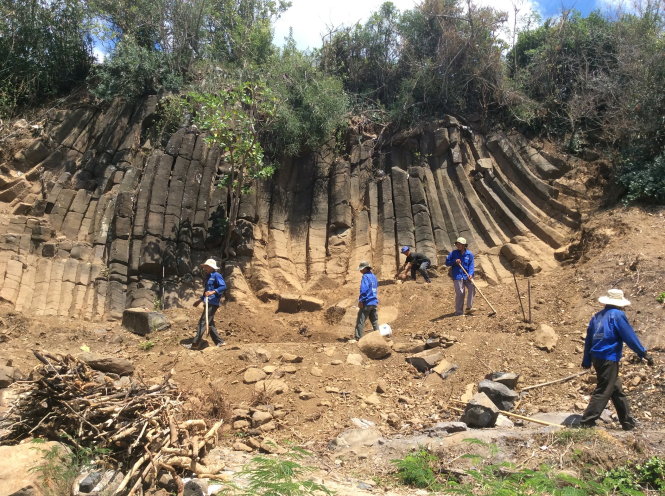Work has been well underway to reveal more spectacular volcanic rock columns, after the first ones were discovered early last year at a natural wonder in south-central Vietnam, promising to increase the tourist magnet’s attractiveness.
Laborers are removing overgrowing plants and reddish brown soil from a hill of hexagonal basalt columns at Phu Yen Province’s Ganh Da Dia (Plate Rock Formations), a coastal national wonder with polygonal rock structures sitting closely together like stacked dishes in locals’ imagination.
The columns were created after magnesium- and iron-rich larva cooled down – a process that took place at areas with basalt columns like the Giant’s Causeway in Ireland, Scotland’s Fingal’s Cave and the Los Organos cliffs in Spain.
The clearance project at Ganh Da Dia kicked off in early August, over half a year since the additional basalt column site, measuring 70 meters by 50 meters, was discovered by a group of officials from the province’s Department of Culture, Sports and Tourism.
The plan, slated to complete by the end of this year, costs over VND771 million (US$33,150), which comes from fares for entrance to the natural wonder.
The site, with basalt columns leaning against each other, was aged thousands of years, according to Tran Dac Lac, a geological expert, who added that they are not prone to slides.
This is of course the case if human action there poses no harm.
Cao Thanh Nghiep, a member of the Ho Chi Minh City Association of Architects, said several columns had been displaced during the work of removing plants and soil materials on their surface.
Nghiep worried that the effort was intrusive and very likely to damage the natural structures, especially because the rainy season is nearing.
The present peak tourist season here may also be adversely affected, he pointed out.
Like us on Facebook or follow us on Twitter to get the latest news about Vietnam!






















































